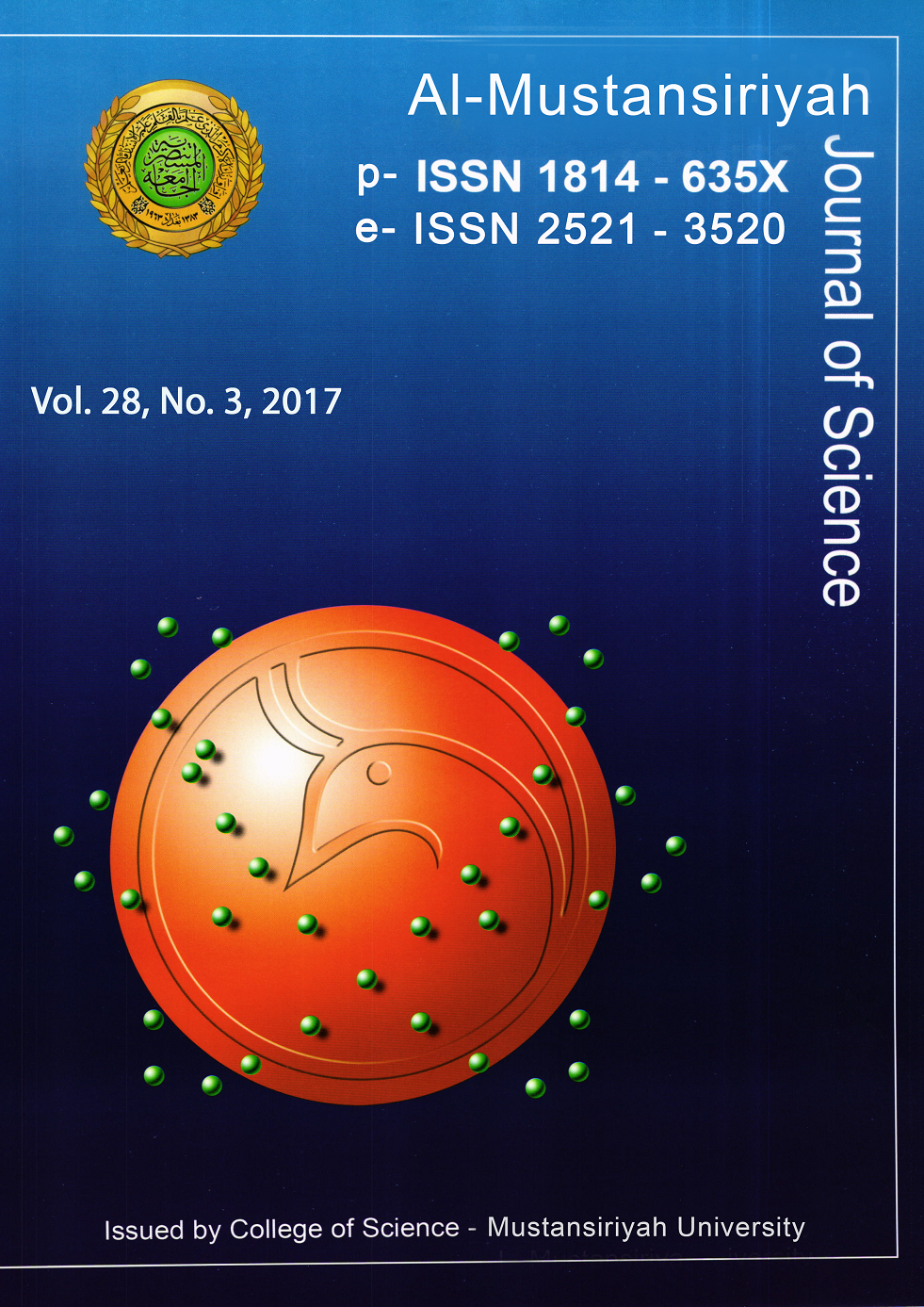Studying Recorded lightning over Iraq for Period 1998-2011
DOI:
https://doi.org/10.23851/mjs.v28i3.50Abstract
This research studies distribution of thunderstorm in Iraq for the period (1998-2011), the result showed that the largest regions which had been hit by lightning stroke were between latitude (35-36◦)E and longitude (45-46◦)N, and April was the most frequent of lightning occurrence, also the results showed that the number of flashes of most lightning cases were between (50-100) with higher number of flashes for some special cases. The studying of meteorological parameters which accompanied thunderstorm formation such as (Mean sea level pressure, Lifting index, relative humidity and Vertical velocity) illustrates the values of mean sea level pressure were increased during the hours after lightning occurrence comparing with their values before and at the time of lightning occurrence and their monthly mean value much greater than that recorded at the time of lightning occurrence, in addition the values of lifting index were negative at the time of lightning occurrence that refer to instability whereas their monthly average showed positive values. The values of relative humidity were greater at lightning recorded time at the three levels (500, 700, 1000)mb and also through the hours before and after this time comparing with their monthly mean. Vertical velocity values were negative for the three levels at the time of lightning occurrence that is referring to upward motion which is necessary for thundercloud initiation, and their monthly mean values were mostly negative at (500, 700)mb whereas were positive at the surface levelDownloads
References
Aldarajy.K.,2004:thunderstorm,research present to Baghdad University- the Encyclopedia scientific 62 pp.
Rakov, V. A., and M. A. Uman (2003) Lightning: Physics and Effects. Cambridge, UK: Cambridge University Press.
Wang, P. K., (2013): Physics and Dynamics of Clouds and Precipitation, Cambridge University Press. 467 pp.
Beasley, W.H., M.A. Uman, P.L. Rustan, 1982 : Electric fields preceding cloud-to-ground lightning flashes, J. Geophys. Res,87 :4883-4902.
Rakov, V. A.,2013: The physics of lightning, Surv Geophys. Res. 34(DIO): 701-729.dio:10.1007/S10712.9230 pp.
Liu, C., E. R. Williams, E. J. Zipser, and G. Burns (2010) Diurnal variations of global thunderstorms and electrified shower clouds and their contribution to the global electrical circuit. J. Atmos. Sci.,vol 67, 309–323.
Racov, V.A., 1998: Some inferences on the propagation mechanisms of dart leaders and return stroke, J.Geophys Res, 103 :1879-1887.
Trmm.chpc.Utah.edu/
NCEP reanalysis
Downloads
Key Dates
Published
Issue
Section
License
(Starting May 5, 2024) Authors retain copyright and grant the journal right of first publication with the work simultaneously licensed under a Creative Commons Attribution (CC-BY) 4.0 License that allows others to share the work with an acknowledgement of the work’s authorship and initial publication in this journal.






















